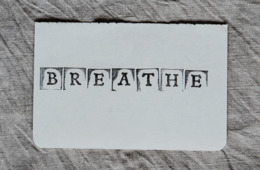
Modern life moves fast. Between deadlines, screens, and the constant hum of notifications, our minds rarely get a moment to breathe. But nature offers a quiet, powerful antidote. Time spent outdoors doesn’t just feel good, it has proven effects on mental health. From reducing anxiety to boosting focus, the simple act of stepping outside can transform how we think, feel, and live.
- Choose a quiet area with varied habitats.
- Go early in the morning when birds are most active.
- Dress comfortably and bring water, sunscreen, and insect repellent.
- Keep still and let the sounds come to you.
The Science of Nature and the Mind
Studies consistently show that time in natural environments reduces stress hormones, improves mood, and increases creativity. The reason is simple: nature restores what modern life drains. The sights, sounds, and rhythms of the natural world calm the nervous system and reawaken attention spans dulled by overstimulation. Even a short walk among trees can lift the fog from a tired brain.
Exposure to sunlight also regulates sleep patterns and boosts serotonin, a neurotransmitter tied to happiness and focus. When we move through natural light and air, our bodies align with natural rhythms that urban life often disrupts.
Chasing the Sunrise or Sunset
Few things compare to watching the sky change colors as the sun rises or sinks. It’s an experience both grounding and uplifting, reminding us that beauty still exists in simple moments. Taking in these transitions can quiet racing thoughts and bring a sense of perspective that screens can’t provide.
Natural light at dawn or dusk also supports healthy sleep cycles. For those who struggle with insomnia or burnout, spending a few minutes outdoors during these hours can restore balance to both mood and body clock.
Explore National Parks and Green Spaces
National parks are living sanctuaries of calm. Whether you’re standing at the edge of the Grand Canyon or walking through a local reserve, nature has a way of making stress feel smaller. Trails invite gentle movement, fresh air clears the mind, and the scenery reconnects us to something bigger than ourselves.
Can’t reach a national park? Local parks and community gardens offer the same benefits on a smaller scale. They’re easy to access and often overlooked. A half-hour among trees or flowers can lower blood pressure and lift your mood more than an hour scrolling through social media ever could.
Walk Your Way to Calm
A walk in nature is one of the simplest forms of therapy. The repetitive rhythm of walking clears the mind while natural surroundings ease tension. Research shows that walking outdoors reduces cortisol, improves concentration, and helps regulate emotions.
Unlike indoor exercise, walking on uneven ground challenges balance and coordination, keeping both body and mind active. It’s a reminder that movement doesn’t have to be extreme to be effective.
See Through a New Lens: Nature Photography
Photography encourages mindfulness. When you focus on framing a leaf, a bird, or sunlight through trees, your attention narrows to the present moment. This quiet focus naturally slows the mind’s chatter and cultivates appreciation.
You don’t need fancy gear. A phone camera works perfectly. Experiment with angles and lighting. Capture reflections, textures, and colors. Editing your photos can also be a relaxing creative outlet. Adjust contrast or brightness to highlight what inspired you, but let the natural beauty speak for itself.
Pedal Through the Outdoors
Cycling offers both movement and mindfulness. The steady rhythm of pedaling through changing scenery creates a meditative state that resets the brain. It’s an excellent way to improve cardiovascular health while also reducing symptoms of anxiety and depression.
Cycling outdoors encourages deep breathing, helping oxygen reach the brain more efficiently. It’s a reminder that freedom often comes on two wheels, surrounded by open air.
The Restorative Power of a Walk
Even a simple power walk can be transformative. Fresh air, sunlight, and natural sounds lower tension and boost endorphins, while a faster pace increases your heart rate. Walking also helps balance the chemicals that affect mood, including dopamine and serotonin. It also provides a gentle way to process thoughts and emotions.
You don’t need a remote forest to feel the benefits. A nearby park, tree-lined street, or coastal path can provide the same mental reset.
A Day at the Beach
Few places soothe the senses like the shoreline. The combination of salty air, rhythmic waves, and open horizon has an immediate calming effect. The beach invites mindfulness, listening to waves, feeling sand beneath your feet, or floating in cool water. These small sensory moments ground the mind and relieve tension.
Sunlight exposure also increases vitamin D, which supports both mental health and immune function. Whether you swim, surf, or simply sit and breathe, the ocean has a way of reminding us how to let go.
Picnics for the Soul
A picnic isn’t just about food, it’s about slowing down. Eating outdoors encourages connection with both nature and the people around you. Sharing a meal under the trees creates a natural sense of calm and community.
Spending time in green environments reduces anxiety and improves emotional resilience. Add a scenic view or short post-picnic walk, and you’ve built an effortless wellness ritual. Even a solo picnic can refresh your perspective, especially if you leave your phone behind.
Birdwatching: A Mindful Escape
Birdwatching turns observation into meditation. It teaches patience, focus, and appreciation for details we often overlook. The act of quietly watching and listening pulls attention away from stress and back into the present.
To start, find a local trail or park and bring binoculars or even a simple camera. Field guides and bird apps can help identify species. The goal isn’t expertise, it’s awareness. Each flutter and song becomes a reminder that life moves in its own rhythm. And watching the behavior of birds can actually be pretty interesting.
Tips for a Better Birdwatching Experience:
Hiking for the Mind and Body
Hiking is nature’s therapy session. It combines physical movement with emotional release. Each step grounds you in the moment, helping thoughts settle and worries fade. The mix of exertion and fresh air increases endorphins and reduces stress hormones.
You don’t have to tackle a mountain to feel the benefits. Even short trails can bring a sense of accomplishment and clarity. Many people find their best ideas arrive mid-hike, when the body moves and the mind finally quiets down.
The Calm of Camping
Camping strips life down to its essentials: food, warmth, rest, and the company of others. Without screens or constant noise, time slows. Even small moments, listening to crickets, watching a fire crackle, or staring at the stars, can be deeply restorative.
Unplugging in this way strengthens focus and sleep quality while lowering anxiety. The outdoors encourages balance and reminds us that peace doesn’t require perfection. Just presence.
Why Nature Works
The reason nature is so powerful lies in how it engages the senses. Visual beauty, natural scents, the sound of birds or wind, all stimulate parts of the brain tied to emotion and memory. These experiences lower heart rate, calm the mind, and improve our sense of connection to the world.
When we engage with the natural environment, we move from survival mode to awareness. That shift makes room for joy, creativity, and compassion. It’s not magic, it’s biology remembering what feels natural.
Frequently Asked Questions
1. How much time in nature do I need to see benefits?
Studies suggest that just 120 minutes a week, about 17 minutes per day, can significantly improve mood, focus, and stress levels.
2. What if I live in a city?
Even small pockets of green count. Visit local parks, rooftop gardens, or nearby waterfronts. If you can’t get outdoors, bring nature indoors with houseplants, flowers, or natural light.
3. Can nature really help with anxiety and depression?
Yes. Regular exposure to nature lowers cortisol (the stress hormone) and boosts serotonin and dopamine levels, which support mental health.
4. What’s the best outdoor activity for beginners?
Start with simple walks or picnics. The key is consistency, not intensity. Build from there. Try hiking, cycling, or photography once you find what feels best.
5. How can I stay motivated to get outside?
Schedule it like a daily ritual. Meet a friend for a walk, bring your pet along, or tie outdoor time to something enjoyable like coffee or music. The easier it feels, the more often you’ll do it.

Time in nature doesn’t require money, equipment, or elaborate plans. It just asks for presence. Whether you’re standing at the ocean’s edge or sitting quietly in a park, the natural world offers healing in its simplest form. Let it remind you that peace isn’t found in doing more, it’s found in being where life still breathes quietly around you.
Related posts




